GALLERIES
|
COUNTRIES, CULTURES, HISTORY / Israel, Holy Land, Palestina / Christians
The Gospel of Luke
1/26 In the sixth month the angel Gabriel was sent from God to a city of Galilee named Nazareth, 27 to a virgin betrothed to a man whose name was Joseph, of the house of David; and the virgin's name was Mary. 28 And he came to her and said, "Hail, O favored one, the Lord is with you!" 29 But she was greatly troubled at the saying, and considered in her mind what sort of greeting this might be. 30 And the angel said to her, "Do not be afraid, Mary, for you have found favor with God. 31 And behold, you will conceive in your womb and bear a son, and you shall call his name Jesus. 32 He will be great, and will be called the Son of the Most High; and the Lord God will give to him the throne of his father David, 33 and he will reign over the house of Jacob for ever; and of his kingdom there will be no end." 34 And Mary said to the angel, "How shall this be, since I have no husband?" 35 And the angel said to her, "The Holy Spirit will come upon you, and the power of the Most High will overshadow you; therefore the child to be born will be called holy, the Son of God.
|
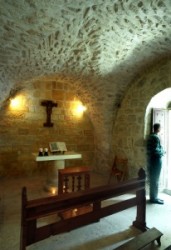
|
The Way of Sorrow- Fifth Station
|
Way of Sorrow- Fifth Station. â As the inscription above the door of this Franciscan chapel says, here Simon of Cyrene took the cross from Jesus and carried it on to Golgotha. This is mentioned in three Gospels, but not in that of John. |
|
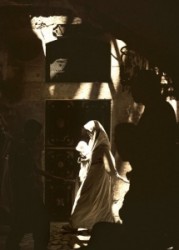
|
The Way of Sorrow-Seventh Station
|
The Way of Sorrow-Seventh Station. Here the Via Dolorosa intersects the noisy bazaar, and a column marked with the Roman numerals VII indicates where Jesus fell for the second time. |
|
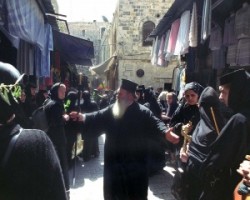
|
The Way of Sorrow- Fourth Station
|
Way of Sorrow- Fourth Station. The meeting between Jesus and his mother is commemored by a small oratory with an exquisite lunette over the antrance, adorned by a bas- relif carved by the Polish artist Zieliensky. |
|
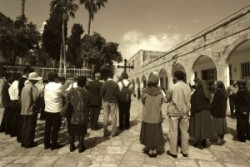
|
The Way of Sorrow- First Station
|
the Chapel of the Flagellation where tradition holds that Jesus was interrogated by Pilate. The Franciscans and Pilgrim's begin their weekly procession through the Stations of the Cross here, on Friday afternoons. This modest chapel was built on the site of a Crusader oratory. Inside are glass panel representing the scourging of Jesus (center), Pilate cleansing his hands of the blood of the innocent (left), and the liberation of Barabas (right).
|
|
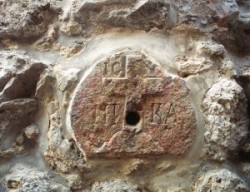
|
The Way of Sorrow- Eight Station
|
The Way of Sorrow- Eight Station. A small plaque with a cross on the wall marks the place where Jesus met his pious women of Jerusalem and told them, âDonât weep for me, daughters of Jerusalem, but yourselves and your children.â st. Luke
|
|
|
|






